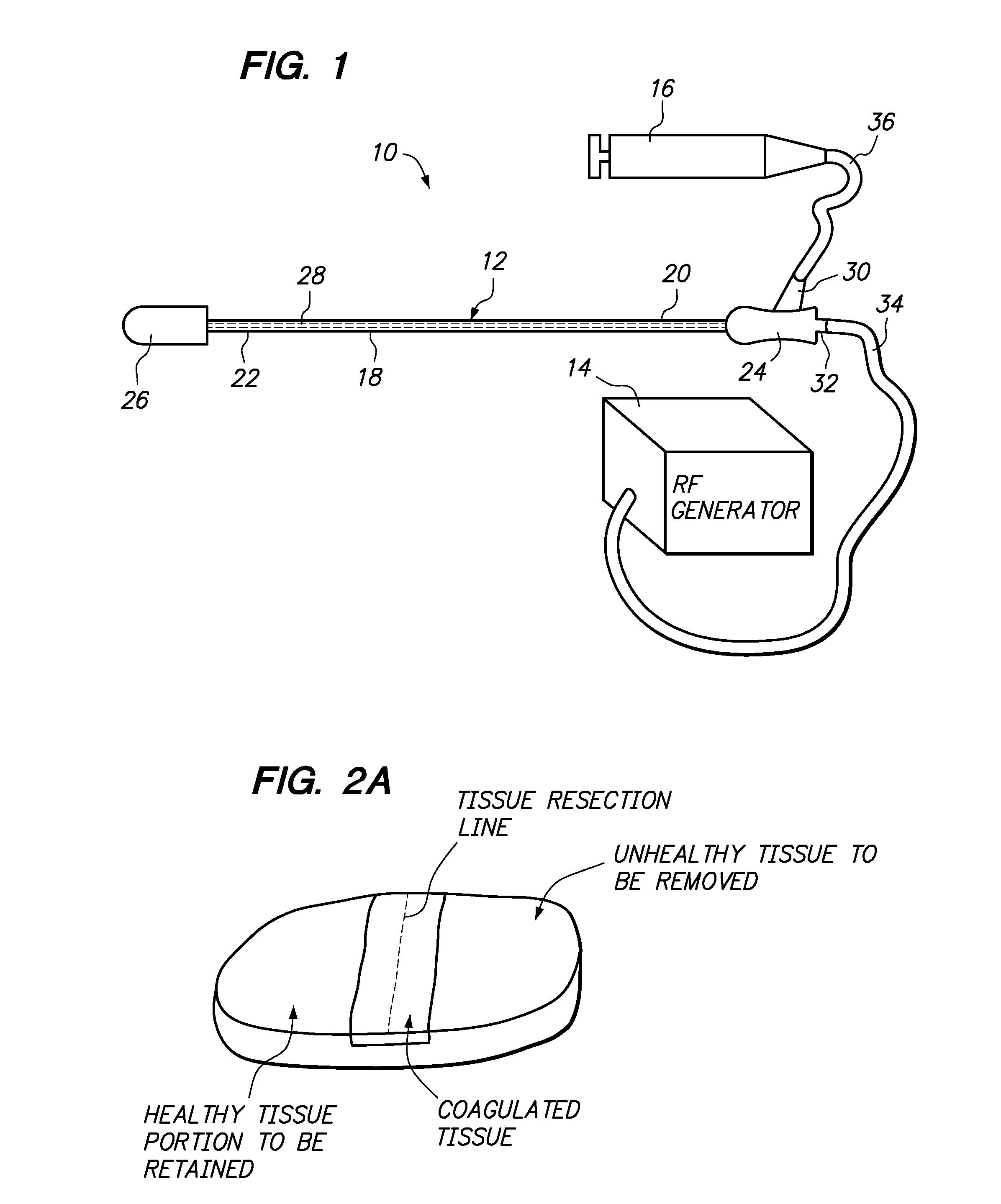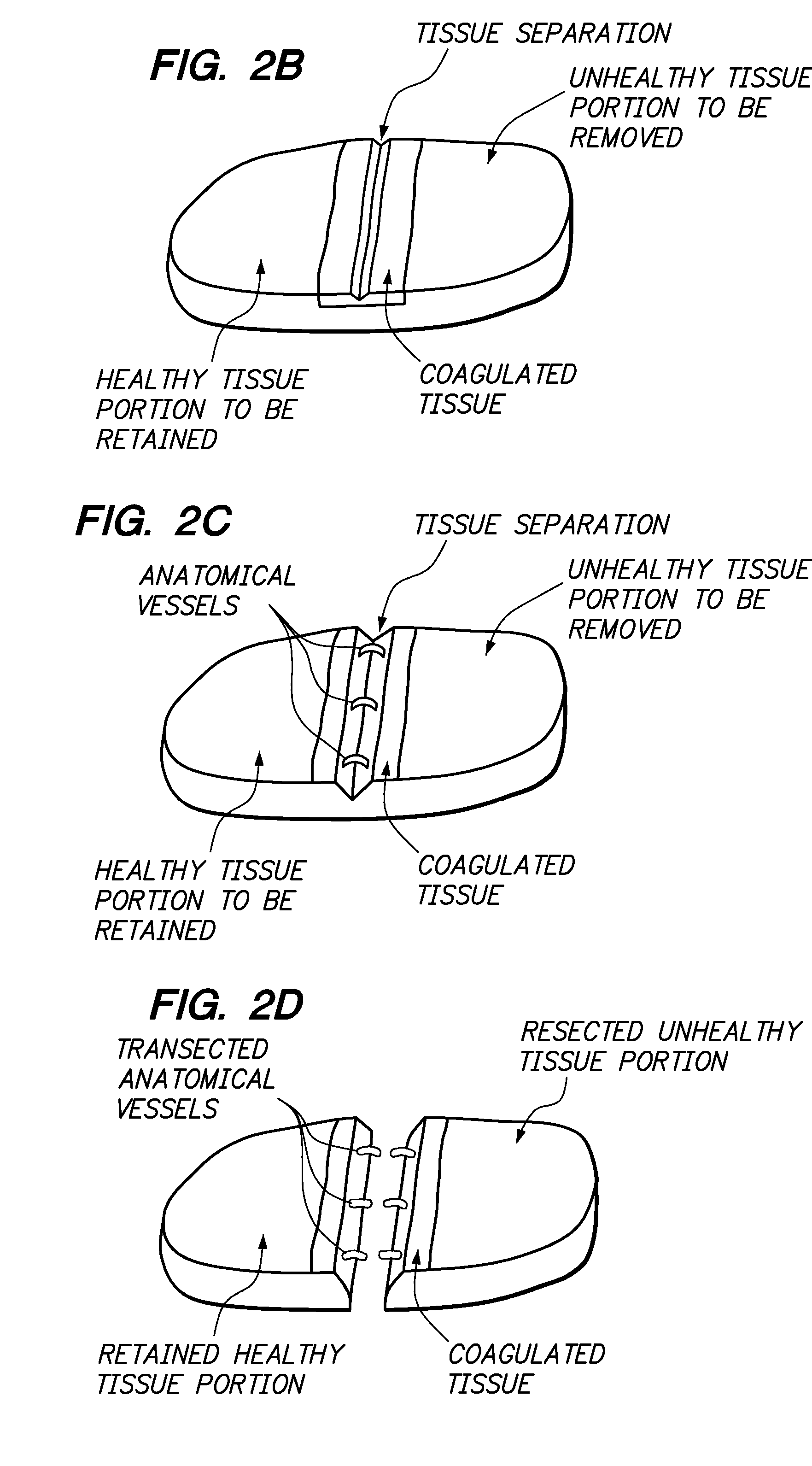Foam electrode and method of use thereof during tissue resection
a foam electrode and tissue resection technology, applied in the field of tissue ablation devices and methods, can solve the problems of increasing the complexity, time and expense of the resection procedure, affecting the safety of patients, so as to prevent tissue charring and prevent blood or fluid loss.
- Summary
- Abstract
- Description
- Claims
- Application Information
AI Technical Summary
Benefits of technology
Problems solved by technology
Method used
Image
Examples
Embodiment Construction
[0073]FIG. 1 illustrates a tissue resection system 10 constructed in accordance with a preferred embodiment of the present inventions. The tissue resection system 10 generally comprises tissue coagulation / resection probe 12 configured for coagulating and resecting tissue, an ablation energy source, and in particular a radio frequency (RF) generator 14, configured for supplying RF energy to the tissue resection probe 12 in a controlled manner, and an electrically conductive fluid source, and in particular a syringe 16 configured for supplying electrically conductive fluid (e.g., saline) to the resection probe 12 to provide an electrically conductive path for the RF energy from the resection probe 12 to the tissue to be coagulated / resected.
[0074] The coagulation / resection probe 12 generally comprises an elongated probe shaft 18 having a proximal end 20, a distal end 22, a handle assembly 24 mounted to the proximal shaft end 20, a tissue coagulation / resection assembly 26 mounted to th...
PUM
 Login to View More
Login to View More Abstract
Description
Claims
Application Information
 Login to View More
Login to View More - R&D
- Intellectual Property
- Life Sciences
- Materials
- Tech Scout
- Unparalleled Data Quality
- Higher Quality Content
- 60% Fewer Hallucinations
Browse by: Latest US Patents, China's latest patents, Technical Efficacy Thesaurus, Application Domain, Technology Topic, Popular Technical Reports.
© 2025 PatSnap. All rights reserved.Legal|Privacy policy|Modern Slavery Act Transparency Statement|Sitemap|About US| Contact US: help@patsnap.com



